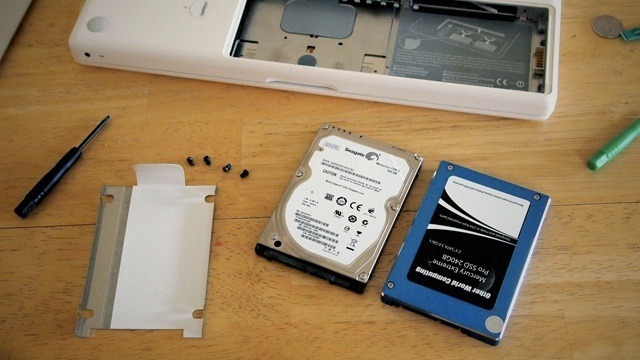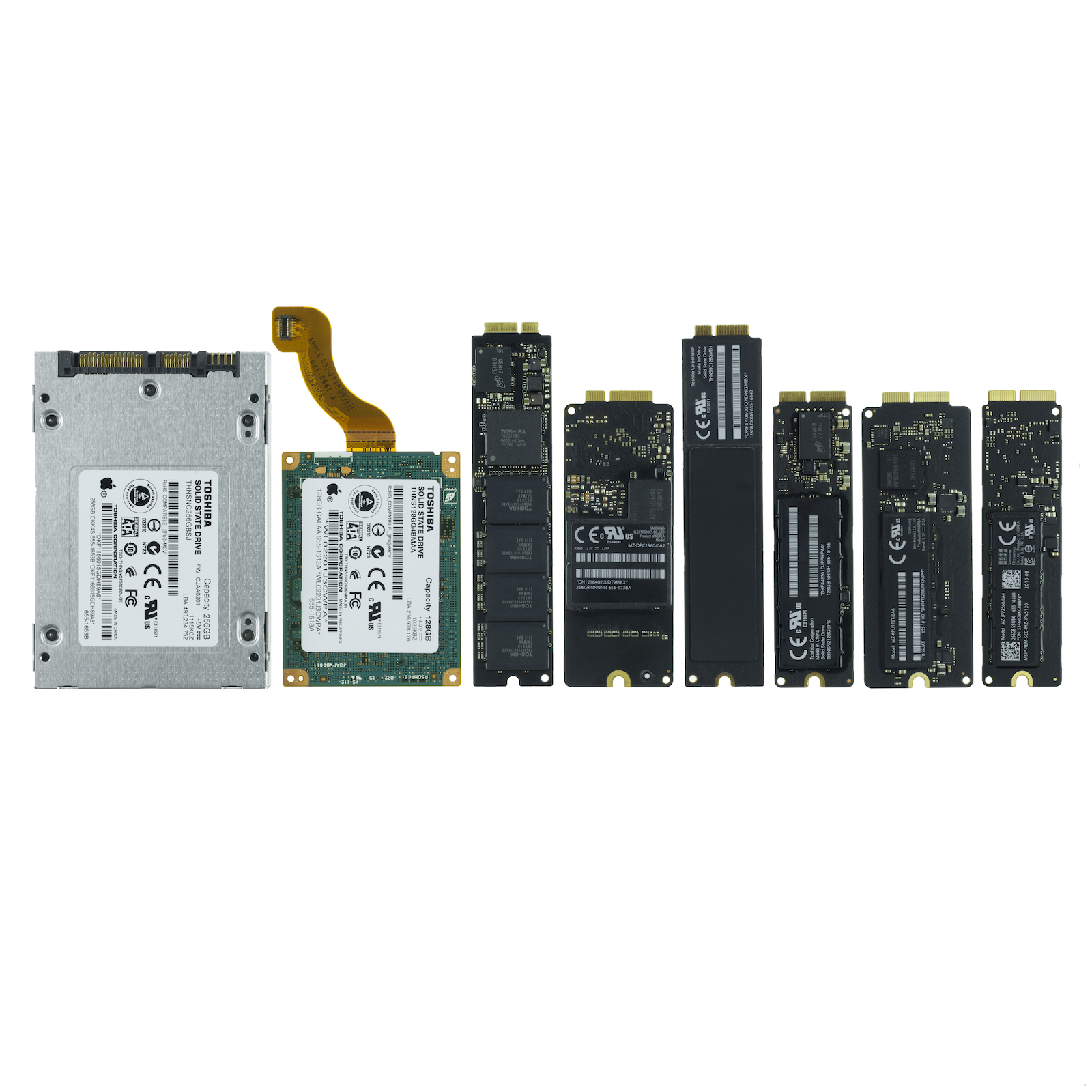

PCIe 1.0 and 2.0 both use 8b/10b encoding to transmit data (the same as SATA), meaning that for every 8 bits of data sent, the data is sent via a 10 bit line code. In 2011 the PCIe 3.0 revision was released, and finally brings more to the table than just the ability to add additional channels.

Most PCIe SSDs will have either 2, or more recently, 4 channels of throughput. Two channels of throughput (~1GB/s) not enough for you? Double the number of channels to four and you’ll realize double the data transfer rates, if the connected device can make use of it that is. PCIe bandwidth can be scaled up to 16 and even 32 lanes for a single device, but that’s uncommon in SSDs and primarily reserved for devices like graphics cards which have larger data transfer requirements. Those speeds may sound a bit slower than SATA III, but PCIe has the advantage of utilizing multiple channels of throughput to accommodate the needs of the connected peripheral. PCIe 2.0 (which is likely to be the most common PCIe revision found inside in-use computers) maxes out at ~500MB/s with a single channel of throughput. Like the SATA bus standard, PCIe has undergone multiple revisions over the years and is still evolving at breakneck speeds. It’s no wonder that manufacturers moved towards PCIe technology for their bandwidth hungry SSDs. Peripheral Component Interconnect Express (PCIe) is a computer bus standard with incredibly high bandwidth potential, and is the fastest bus option that most computers have available. In short, SATA just wasn’t made for solid state drives. And even if you’re using a SATA III interface, you’re still probably limiting your SSD. But as it applies to SSDs, if you’re not using a SATA III connection, it’s safe to assume you’re limiting the potential of your drive. This can cause some confusion in the event that you connect a hard drive that supports the SATA III standard into a SATA II connector, creating a bottleneck at the SATA II interface that will limit the potential bandwidth of the drive. The SATA standard has now undergone three major revisions, resulting in connectors that are identical in appearance (hurray for backwards compatibility), but with bandwidth doubling each time. The SATA standard’s been in use for many years and is still the most prevalent interface for connecting internal storage drives. SATA (Serial Advanced Technology Attachment) refers to the technology standard for connecting hard drives, solid state drive, and optical drives to the computer’s motherboard.

Luckily, advances in host interfaces invariably stay ahead of the pace of drive technologies, always allowing room to push speeds a bit farther.

If you are, it’s time to get up to speed!Įver faster drive technology, brought about by faster spinning disks, increased cache, advances in controller architecture, and a host of other factors keeps pushing the host interface to become the bottleneck for read and write speeds. If you’re into vintage computers and you think patience is a virtue that can only be honed by waiting for programs to respond, maybe you’re still rocking a drive with a PATA interface. 5AĮvery hard drive or solid state drive you’ve used in the past ten years is likely to have used either a SATA interface, or more recently a PCI Express interface.


 0 kommentar(er)
0 kommentar(er)
